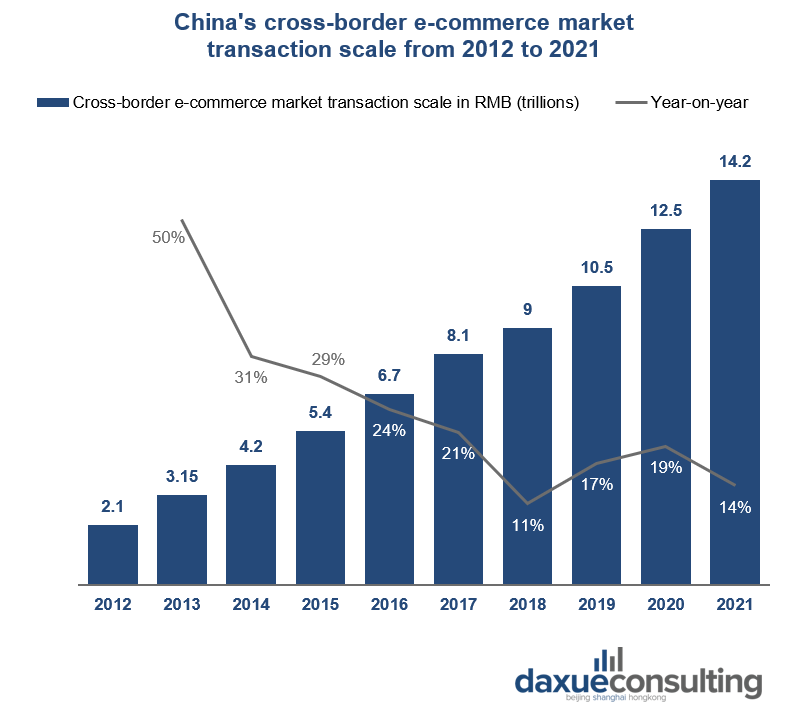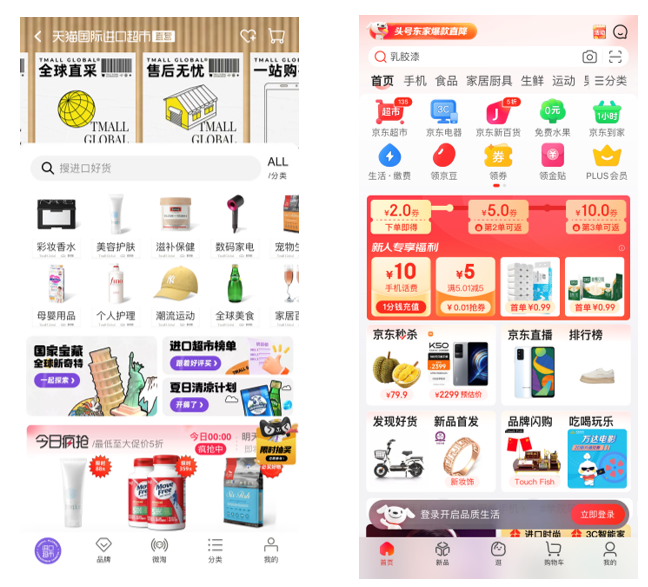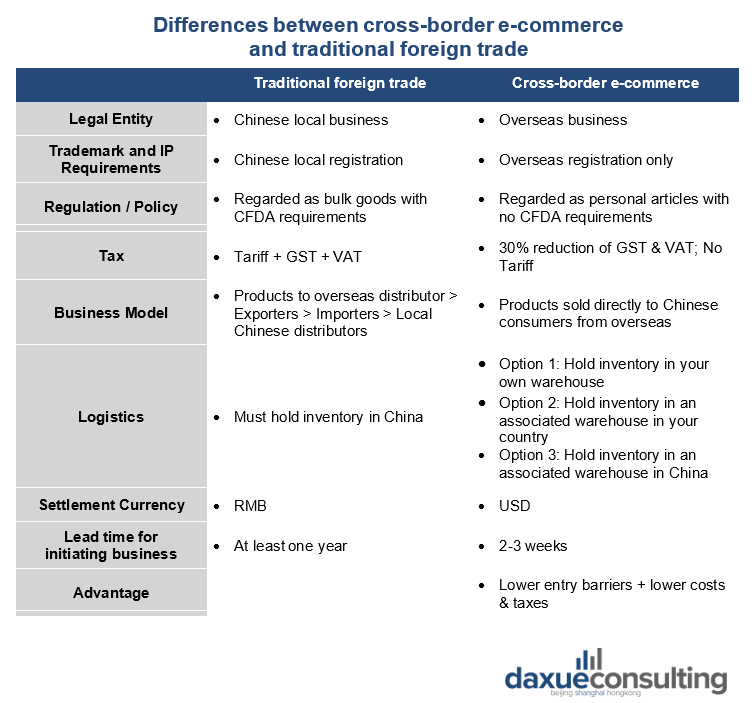China’s cross-border e-commerce is a sales channel that allows businesses to access the local market without being based in the country.
After its accession to the WTO, China’s trade in goods exports surged. The volume increased from about RMB 2 trillion to RMB 12.3 trillion between 2000 and 2011, boasting a compound annual growth rate of nearly 18%. Such growth drastically slowed down after 2012. The export volume of goods trade was worth RMB 17.9 trillion, with an annual compound growth rate of 4.3% compared to 2011.
Although export growth has slowed down, we observe that China’s cross-border e-commerce (CBeC) transaction volume and total import and export volume are both steadily increasing. China’s CBeC achieved a total import and export volume of RMB 1.69 trillion in 2020, up 31.1% year on year, accounting for more than 30% of Chinese foreign trade.
NetEase Kaola, VIP.com, Tmall Global and JD Global are the main cross-border e-commerce platforms in China.

Increasing demand for high quality products and preferential policies are boosting the CBeC in China
The growing demand for high-quality foreign products and preferential rules for imported goods are among the main drivers behind the steady growth of the CBeC in China. According to the US International Trade Agency, more than 68% of Chinese customers claim to believe that foreign products are of higher quality and less likely to be counterfeit. Even though local brands are gaining ground, consumers still prefer foreign brands, especially in the fashion and beauty industries, which constitute the largest share of e-commerce imports.
On the other hand, in the last decade, the Chinese government promoted the CBeC in China through introducing policy incentives, such as cross-border e-commerce pilot zones and preferential tax rate. As early as 2015, China began to set up cross-border e-commerce pilot zones in Hangzhou, Zhejiang province, to test the new business model and digitalize its trade channels. In February, the State Council revealed its sixth batch of 27 cross-border e-commerce pilot zones, raising the total to 132. China’s cross-border e-commerce has seen coordinated growth across different areas, from the coastal Guangdong, a hub of manufacturing, to the interior port city of Alashankou in the Xinjiang Uygur autonomous region of Northwest China. Products sold to Chinese consumers from these zones could benefit from a lower import tariff depending on the products, and enterprises enjoy streamlined customs procedures.

Differences between cross-border e-commerce in China and traditional foreign trade
Compared to traditional trade that requires a lot of initial investment, cross-border e-commerce has lower regulatory barriers, which makes it a faster, lower-risk, easier way for international brands to start selling in China. Foreign companies can register to sell on online platforms, such as JD Worldwide, with a foreign business license and trademark. There is no need to register locally as a Chinese company, which can take up to one year.
In addition, cross-border shipments do not require CFDA approval, enjoy a 30% reduction of GST and VAT, and are duty-free. Last but not least, launching a brand in China is much simpler when using cross-border e-commerce. Instead of working with an overseas distributor, exporters, importers, and local Chinese distributors, products are sold directly to Chinese customers.

Covid-19’s Impact on Cross-border e-commerce in China
While most countries are easing their restrictions, China is still implementing a strict zero-Covid policy. Since the outbreak of COVID-19, cross-border e-commerce in China has gained an unparalleled advantage since Chinese consumers moved their shopping online, they were restricted from going abroad, and Daigous could not move as freely as before. These factors boosted the growth of CBeC in China during 2020, despite the lockdowns across the globe and the rising logistical cost. However, Shanghai’s 2-months-long lockdown at the beginning of 2022 significantly disrupted the national supply chain, resulting in huge implications on the global level. According to Danish shipper Maersk, the Shanghai lockdown “severely hurt trucking services and increased transport costs, as China’s intensifying efforts to fight the spread of Covid-19 further rattled global supply chains.” Since March 2022, although Shanghai has kept its deep-water port and airports open, it has enforced strict movement limitations.
Disruptions go beyond big ports and airports
The logistical problems go beyond big ports and airports: the country’s patchwork system of rules regulating movement between towns and cities is drastically slowing down cargo deliveries. In order to ensure sufficient supplies of daily necessities, the central government issued special permits to drivers and enterprises that move goods across the country. Nevertheless, Covid-19 tests taken in one province may not be valid in other provinces, thereby delaying transport operations. Moreover, travel documents may not be recognized from one municipality to another, so containers have to be dropped off at borders — to be collected by drivers from that province. In some cases, drivers themselves “do not want to deliver to a restricted area because they are worried that they will not be able to come out again,” said Danny Lau, who owns an aluminum factory in Dongguan.
While another massive lockdown is unlikely, we should still other black swan events. Sudden changes of policy, shifting consumer behaviors, unexpected military conflicts, contagious diseases, and technology breakthrough are all influencing the dynamics of cross-border e-commerce in China.
What we can learn from the cross-border e-commerce in China
- Especially since the outbreak of the COVID-19 pandemic, new opportunities have arisen for foreign brands willing to enter the Chinese market.
- Via cross-border e-commerce platform, brands can enter the market with easier customs procedures, limited investment, and lower tax rate.
- The increasing demand for high quality goods as well as government’s preferential policies boosted the growth of CBeC in China
- On the one side, as Chinese consumers were restricted from going abroad, the global pandemic induced more and more people to utilize CBeC platforms to purchase foreign goods.
- On the other hand, supply chain disruptions due to China’s Zero-Covid strategy is hindering delivery operations.





